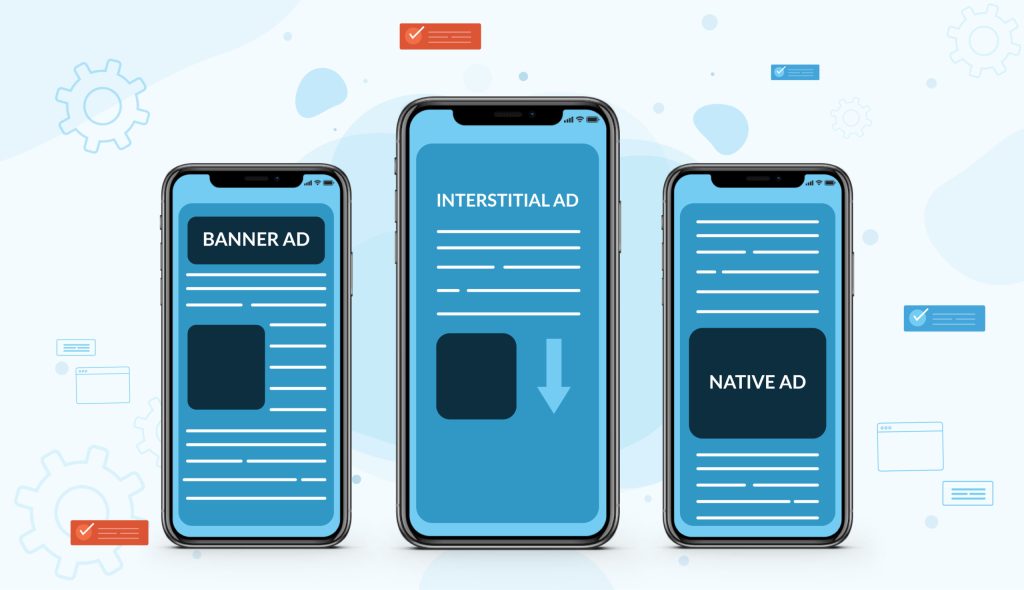Native Ads
Native ads are advertisements that mimic the style and format of the platform they appear on, making them a natural part of the user experience while delivering brand messaging.

What Are Native Ads?
Native ads are a form of online advertising that seamlessly integrate with the content of a website or platform, designed to match the look and feel of the surrounding material. Unlike traditional display ads, which can interrupt the user experience, native ads provide a more subtle and engaging way to promote products or services. They often take the form of sponsored articles, videos, or social media posts that offer valuable information or entertainment, making them less intrusive and more appealing to consumers. By blending in with organic content, native ads enhance brand visibility while fostering user engagement, leading to higher click-through rates and improved conversion potential. This approach allows brands to connect with audiences in a way that feels authentic and relevant, ultimately driving better results in digital marketing campaigns.
Improved Brand Perception
Reduced Ad Blindness
Boost Visibility
Case Study
Watch a brief video which further explains native ads:
FAQ
Frequently Asked Questions
Yes, native advertising can help your company stand out in several ways:
1. Seamless Integration
Native ads blend in with the surrounding content, making them less intrusive and more engaging. This seamless integration can capture users’ attention without the typical ad fatigue associated with traditional advertising formats.
2. Authenticity and Relevance
By providing valuable and relevant content that resonates with your target audience, native ads can enhance your brand’s authenticity. This relevance helps differentiate your company from competitors who may rely solely on overt promotional tactics.
3. Enhanced Storytelling
Native advertising allows for creative storytelling, enabling your brand to convey its message in a compelling way. This can create a stronger emotional connection with your audience, making your brand more memorable.
4. Improved Brand Perception
When done effectively, native ads can enhance your brand’s image by positioning it as a thought leader in your industry. By offering insightful content, you can foster trust and credibility, helping your company stand out in a crowded market.
5. Targeted Exposure
Native ads can be tailored to specific demographics and interests, ensuring that your message reaches the right audience. This targeted approach increases the likelihood of engagement and can help your brand resonate with potential customers.
Overall, native advertising, when executed thoughtfully, can effectively differentiate your company and enhance its visibility in a competitive landscape.
Native advertising differs from traditional advertising in several key ways:
1. Integration with Content
- Native Advertising: Seamlessly blends into the surrounding content, matching the style and format of the platform it appears on. This makes it feel like a natural part of the user experience.
- Traditional Advertising: Typically stands out as a separate element, such as banner ads, TV commercials, or print ads, which can interrupt the user’s engagement with the content.
2. User Experience
- Native Advertising: Enhances user experience by providing valuable or entertaining content that engages users rather than disrupting them. It is designed to be less intrusive and more relatable.
- Traditional Advertising: Often viewed as disruptive, traditional ads can lead to ad fatigue, where users become desensitized and less responsive to promotional messages.
3. Messaging Approach
- Native Advertising: Focuses on storytelling and providing information that aligns with users’ interests, creating a more engaging narrative around the brand or product.
- Traditional Advertising: Generally employs a direct sales approach, emphasizing product features and benefits, often in a more overtly promotional manner.
4. Engagement and Interaction
- Native Advertising: Encourages interaction through informative content, which can lead to higher engagement rates and foster deeper connections with the audience.
- Traditional Advertising: Typically offers limited opportunities for interaction, with most traditional formats being passive (e.g., watching a commercial).
5. Measurability
- Native Advertising: Performance can be tracked through engagement metrics, such as clicks, shares, and comments, as well as conversions resulting from user interactions with the content.
- Traditional Advertising: Measurement often relies on broader metrics, like reach and impressions, making it more challenging to assess direct impact on engagement and conversions.
6. Cost Structure
- Native Advertising: Costs can vary widely depending on the influencer or platform and are often linked to performance, making it potentially more cost-effective for brands.
- Traditional Advertising: Typically involves higher upfront costs, especially for premium placements in television or print media, and may require significant budgets for production.
Overall, native advertising offers a more integrated and engaging approach compared to traditional advertising, making it a powerful tool in modern marketing strategies.
Whether native advertising is “better” than other forms of advertising depends on various factors, including your marketing goals, target audience, and the specific context of your campaign. Here are some considerations:
Advantages of Native Advertising
Higher Engagement Rates: Native ads often see higher engagement compared to traditional ads because they blend seamlessly with content, making them less intrusive and more appealing to users.
Improved Brand Perception: By providing valuable content, native ads can enhance a brand’s credibility and authenticity, fostering a positive relationship with the audience.
Better Targeting: Native ads can be tailored to specific audiences based on their interests and behaviors, allowing for more relevant messaging that resonates with potential customers.
Less Ad Fatigue: Since native ads feel less like traditional advertisements, they are less likely to contribute to ad fatigue, allowing brands to maintain user attention more effectively.
Limitations of Native Advertising
Subtlety: The subtlety of native ads can be a double-edged sword. While it helps in reducing disruption, it may also lead to lower immediate brand recall compared to more direct advertising.
Content Creation: Creating effective native ads requires high-quality content that resonates with the audience, which can be resource-intensive.
Measuring Success: While engagement metrics can be tracked, measuring direct conversions can sometimes be more challenging than with traditional ads that have clear calls to action.
Comparison with Other Forms of Advertising
Traditional Advertising: Better for immediate brand awareness and direct calls to action (e.g., sales promotions). It often has broader reach but can be perceived as less authentic.
Digital Display Ads: Effective for targeting and retargeting, but may suffer from ad blindness and lower engagement rates compared to native ads.
Influencer Marketing: Similar in its reliance on authenticity and trust, but often involves partnerships with individuals rather than the content itself. It can also be more expensive.
Conclusion
Native advertising can be highly effective for brand storytelling and building relationships with audiences, especially in environments where engagement and authenticity are valued. However, the best approach often involves a mix of advertising strategies tailored to your specific objectives and audience preferences. An integrated strategy that includes native ads alongside other forms of advertising can yield the best results.
Creating native advertising involves a systematic approach tailored to the needs of our clients and their target audiences. Here’s how we typically create native ads:
1. Client Consultation
We start by meeting with clients to understand their goals, brand values, and target audience. This helps us align the advertising strategy with their overall marketing objectives.
2. Audience Research
We conduct in-depth research to identify the target audience’s preferences, behaviors, and interests. This ensures that the content we create is relevant and engaging.
3. Platform Selection
Based on the audience research, we choose the most effective platforms for the native ads, whether that’s social media, blogs, or specific publisher sites that align with the brand’s message.
4. Content Development
Our team of content creators crafts high-quality, valuable content that seamlessly integrates with the platform’s existing content. This may include articles, videos, or infographics that provide genuine value to the audience.
5. Design and Formatting
We ensure that the native ads are designed to match the look and feel of the surrounding content, maintaining consistency in branding while enhancing visual appeal.
6. Adherence to Guidelines
We carefully follow the advertising guidelines of the chosen platforms, ensuring transparency with appropriate labeling, such as “sponsored” or “promoted” to maintain audience trust.
7. Incorporation of CTAs
We include clear and compelling calls to action that guide users toward the desired outcome, whether it’s visiting a website, signing up for a newsletter, or making a purchase.
8. Performance Tracking
Once the ads are live, we monitor their performance using analytics tools. We track key metrics such as engagement rates, click-through rates, and conversions to assess effectiveness.
9. Optimization
Based on performance data, we make necessary adjustments to optimize the native ads for better results, such as tweaking headlines, images, or CTAs.
10. Reporting and Analysis
After the campaign concludes, we provide clients with detailed reports that evaluate the success of the native advertising efforts. We analyze what worked well and identify areas for improvement for future campaigns.
By following this comprehensive process, we create native advertising that effectively engages audiences and meets our clients’ marketing objectives.
Native advertising is effective for several reasons:
1. Seamless Integration
Native ads blend naturally into the content of the platform where they appear, making them less intrusive than traditional ads. This integration allows users to engage with the content without feeling interrupted, increasing the likelihood of interaction.
2. Enhanced User Experience
By providing valuable, relevant content, native ads enhance the overall user experience. When users find the content informative or entertaining, they are more likely to engage with it positively.
3. Higher Engagement Rates
Because native ads feel more like regular content, they often achieve higher engagement rates compared to traditional advertisements. Users are more inclined to click, share, or comment on content that resonates with them.
4. Authenticity and Trust
Native ads leverage the credibility of the platform and the content creators. When presented alongside organic content, they can enhance brand trust and authenticity, as users perceive them as less promotional and more informative.
5. Targeted Messaging
Native advertising allows brands to tailor their messages to specific audiences based on their interests and behaviors. This targeted approach increases relevance and effectiveness, making it more likely that users will engage with the ads.
6. Longer Attention Span
Users often spend more time engaging with native ads because they don’t recognize them as traditional advertisements. This extended attention can lead to deeper brand connections and increased retention of the message.
7. Improved Brand Recall
Since native ads provide context and value, they tend to foster better brand recall compared to more overt advertising methods. Users are more likely to remember a brand that delivers useful content.
8. Storytelling Opportunities
Native ads allow brands to tell their stories in a compelling way, using narratives that resonate with the audience. This storytelling approach can create emotional connections and foster brand loyalty.
9. Measurable Results
Native advertising campaigns can be tracked and analyzed through various metrics, such as engagement, clicks, and conversions. This data allows brands to measure effectiveness and refine strategies for future campaigns.
10. Versatility
Native ads can be adapted across various platforms and formats, including social media, blogs, and news sites, making them versatile tools for reaching diverse audiences.
These factors contribute to the effectiveness of native advertising, making it a powerful strategy in modern marketing.
